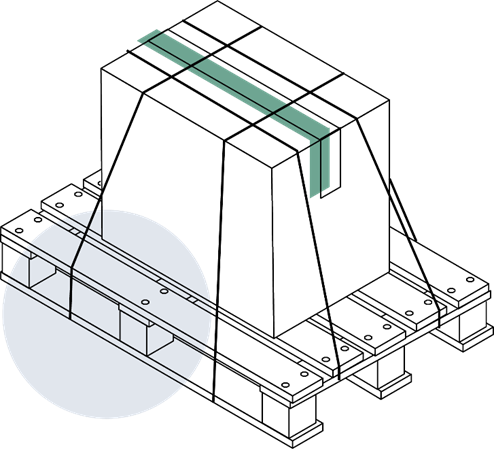Goods weighing more than 30 kg must be shipped on a pallet. Goods that are shipped on a pallet should also be packaged properly.
As a first step, make sure that the goods do not protrude beyond the edge of the pallet. If in doubt, choose a slightly larger pallet.
Free-standing objects should be wrapped with bubble wrap and additionally protected with edge protectors and cardboard, polystyrene or similar. Optimally, you should transport free-standing items in a closed box.
Goods that are transported inside a cardboard box on a pallet should be additionally stabilised inside the box to prevent them from slipping. Packaging chips, polystyrene, cardboard or newspaper are suitable for this purpose.
For additional protection, we recommend placing a pallet cap on the packaged goods. This indicates that the shipment cannot not be stacked during the shipping process.
How can I fix my goods on a pallet?
In addition to the correct packaging of your goods, it is also very important to fix your goods on the pallet. Your goods should be fixed centrally on the pallet with tension belts or lashing straps so that the goods cannot slip on the pallet.
For this purpose, the lashing straps or tie-down straps should be attached to both the long side and the short side.
Attention: Fixing the goods with a stretch film is not sufficient.
|
On the edges of your goods that touch the tensioning straps, it may make sense to attach an extra thick edge protector to avoid cutting into your goods. You can see how to attach your goods to a pallet in the adjacent illustration. |
 |
Why do I need to lash my goods to the pallet?
For the safety of your goods, but also for the entire transport, it is very important that your goods are securely and firmly fixed on the pallet.
If your goods come loose, the risk of damage to your goods, but also to the other goods on the loading area, increases.
You can find more packaging tips by clicking here.
